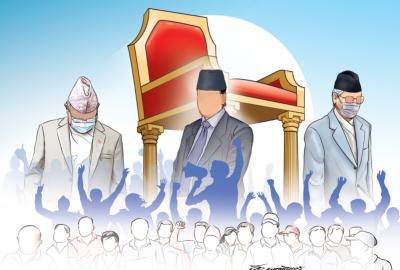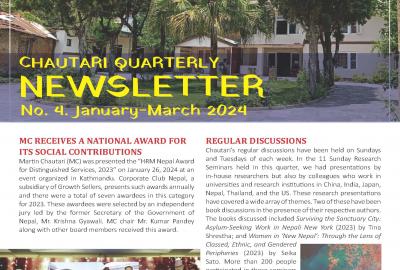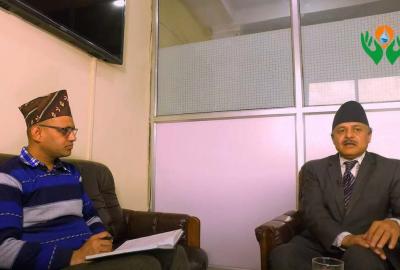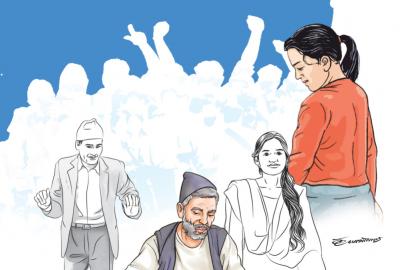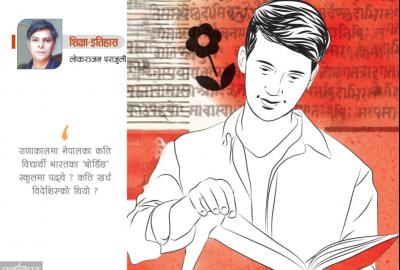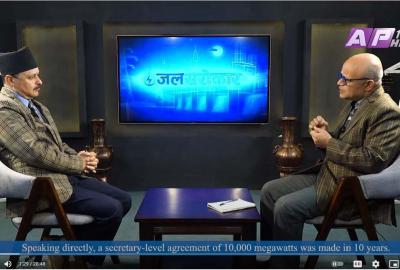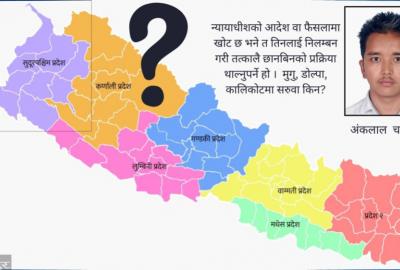The changing relations of Nepal's indigenous peoples with land, nature, and their rights in the post-identity, post-ideology political landscape

Nepal’s indigenous peoples continue their collective acts of remembrance and revival despite being overlooked by the state and media. There is often an exoticised gaze held on indigenous festivals and traditions, but we must not forget their historical, cultural, and political significance. Participating in this year’s Chasok Tangnam or Udhauli gave me an opportunity to understand my heritage, as well as the precarity and potential of such hard-won cultural spaces.
The traffic in Kathmandu was heavy and loud. The air was infused with dust and smoke. Motley assortments of shops were open and busy. Vendors and pedestrians filled the sidewalk. Cocooned by the warmth of the winter sun, everyone appeared enmeshed in their daily lives. People had places to reach, work to do, food to put on the table. There was nothing special about the day or so it seemed.
And yet, as we traversed the valley to reach the forested area of Hattiban, the environment could not have been more different. It was a burst of colours tangled with varied sounds, smells, and flavours. Like many other members of Kirat communities, my mother and I were there to celebrate Chasok Tangnam, also known as Chaasot, Chaasuwa, Sakela, Udhauli, among others.
Under the one roof of Manghim (the house of worship) in Hattiban, there were four different shrines for Yakkha, Sunuwar, Rai and Limbu where respective communities came together to perform rituals to commemorate their relations with land, nature, ancestors, deities, and one another.
In Yakthungpan (Limbu language), ‘cha’ means grain and ‘sok’ means to offer. Thus, Chasok is a ritual that is performed to offer a new harvest to Goddess Yuma Sammang, other deities and ancestors. It also entails asking forgiveness from nature for destroying non-human beings during the process of agriculture.
Sita Mademba argues in her research paper ‘Reimagining Chasok: Resistance against the State’ that Chasok has become a symbol of resistance and collective identity among Limbu communities. She further observes that the annual Chasok is now a ‘great Tangnam’ (a great festival) as it has transformed from a household ritual into a community festival celebrated in public spaces, both within and outside Nepal. And the celebrations continued this year on 8 December – the day of the full moon in the month of Senchengla.

The past and the present
The sparsely forested hill of Hattiban that overlooked the crowded, concrete settlements of the capital city had a festive atmosphere. Many people were dressed in their traditional attire made from colourful, geometric patterned, handwoven dhaka. The diamond shaped brooches of Silam Sakma, symbolising protection against unnatural death, were ubiquitous.
Many women adorned traditional jewelries such as kantha (necklace with golden beads and red felt), samyanfung (huge circular disc worn on the head), nessey (flattened gold earring), sesephung (forehead jewelry), and reji (necklace with coins). Such jewelries not only reflect the traditional fashion, but also the economy of that time and their significance as women’s personal assets and financial security.
Covered by a canopy of smoke from barbecued pork, there were many stalls selling selrotis, chatpate, ‘Singaporey momos’, along with traditional dishes of faksa-yangben (pork with edible lichen), sargemba (pork blood sausage), chaamre (rice with ghee and turmeric), and tongba. There were also homemade potluck lunches that were being shared among friends and relatives.
Free drinking water, seating areas and toilets for the festival had been arranged by community organisations, and they made appeals for voluntary donations. A long queue soon formed to donate and support. Meanwhile, the rhythmic beats of chyabrung and jhyamta echoed through the forest.
 |
 |
Both young and old had come together to share stories and traditions. The younger generations were redefining cultural expressions with TikToks and selfies, and new stylistic interpretations of traditional dresses and jewelries. Their practices honored the past, but also reflected their present. They engaged in Kelang dance with their elders, forming a circle, observing and learning from each other, and synchronising their footsteps to the beats of the wooden drums known as ke or chyabrung.
However, the traditionally popular paddy dance or Yalang, was a less frequent sight. It required knowledge of Limbu language, which was lacking in most younger generations. It was unfortunate that Limbu and other Kirat languages could hardly be heard in a space dedicated to remembering Kirat heritage. The hard-won space of cultural celebration and resistance embodied the legacy of the Nepali state’s ‘one nation, one language’ policy and its oppressive history.
The popular media coverage of indigenous festivals predominantly focuses on images of ‘ethnic women’ adorned in their traditional garb and ornaments. This trend has continued despite growing criticism of the Nepali media’s ‘male gaze’ that perpetuates exoticisation, sexualisation and objectification of indigenous women. There is also much to be said about the limitations of the state’s ‘tolerance policy’ that claims multiculturalism and yet, ends up exoticising non-dominant cultures, making them concerns of specific communities only.

During the Chasok celebrations, the representatives of community organisations criticised the arbitrary ways in which the state protects certain festivals as ‘national festivals’ and reduces public holidays for those celebrated by indigenous communities. A representative said, ‘We are met with traffic as we leave this place, and with a one-day holiday, neither can we visit our villages nor our relatives.’
Through speeches broadcasted over loudspeakers, the organisers were reimagining cultural festivities as a space for collective conscious building.
However, could the given space be more than dance, music, food, and festivity? The intention behind this question is not to undermine the struggles of indigenous movement and the community effort that has created this niche space amidst systemic challenges. Rather, the intention is to critically think about our changing relations with land and nature, and what indigeneity means in the context of migration.
How do we expand the repertoire of our cultural expressions such as preservation of language and understanding of our histories and mundhum (the worldviews)? How do we create a space for multicultural identities and collective rights in the post-identity, post-ideology political landscape of today?
These questions will be important as we disperse back into the traffic of the city, to the daily grind of life, to our diverse concerns and allegiances.
Sangita Thebe Limbu is a PhD candidate at University College London (UCL).
Published: January 10, 2023
Source: https://www.nepalitimes.com/opinion/remembrance-and-revival-of-udhauli/
 Sangita Thebe Limbu
Sangita Thebe Limbu
